Last week/weekend was my second Cary Town Council retreat. So, I guess that means I’m not a newbie anymore. Seems weird to say that.
This retreat felt a bit different than last time – a little more relaxed, with more deep dives into some of the specific issues headed our way rather quickly. Last year’s retreat was more of the strategic, longer term planning – where we made some decisions regarding our Bond referendum (now since passed), the Cary Community Plan (in full planning mode), and received more information regarding demographic trends impacting our community.
Our Town Council retreat (which is ANYTHING but a retreat, more like a MOVE FORWARD) includes Town Council members, a facilitator, the Cary Department Directors and Administration, Town Clerk and a few others. We generally arrive Thursday night, work all day on Friday and through about 3:30pm on Saturday.
Thursday
All of Council traveled to New Bern, NC (the site of this year’s event) on Thursday afternoon so that we can have dinner together. We enjoy this “down time” – catching up on everyone’s family updates, talking about our hobbies, vacations and just about everything BUT Town Council work. We all pay our own way and invite anyone else that wants to attend, but it’s been just us the last two years. Thursday night was rainy, and we all piled into my car for the short drive to and from the restaurant. That’s real togetherness.
Friday
Councilman Ed Yerha and I joined Sue Rowland for breakfast to brainstorm on ways to help our boards and commissions be more effective and to ensure that these tremendous volunteers have what they need to get their job done. If you haven’t met Sue Rowland, our Town Clerk, you need to. She’s got this uncanny way of seeing gaps or problems, or the potential for an improvement and she proactively addresses it. She hardly says “NO” first – she’s more likely to say, “Maybe.” She’s a true gem.
After our focus on the Ground Rules – we went straight to work.
Spotlighting Success
This year, staff presented what we called “Spotlights” – an analysis and deep-dive focus on two major, multi-departmental, town wide projects. The first one was Aquastar. I will write a more detailed blog post about this with pictures and more, but I have to admit, that although I had read a lot about it, I came away with a great appreciation for this new system. Here are the highlights I gleaned from the presentation:
- Aquastar is our new Advanced Water Metering Infrastructure system
- Originally proposed in November 2009
- Reducing carbon emissions by taking 71,000 miles of meter reader trucks off the road, and 7,000 gallons of fuel
- Originally projected to save town $2.4 million, is now projected to save $10.2 million dollars
- Saved $1.9 million dollars in staff hours (including reduction of headcount (10 people), retirement savings, and more)
- Aquastar has 63,000 meters being read, providing more than 500 million data points in a year
- Web access to your data can help you spot leaking toilets, etc. (My data was CERTAINLY interesting.)
- The new Web portal will be launched in March. (I’ll share more about that later, but here’s a quick peek into an example homeowner’s water usage chart.)
Planning, Zoning and Development Process
The goal of this set of three sessions was to brainstorm on ways to make the development process less complex and time consuming. This is for everyone, not just for developers. We’ve heard complaints that it can be complex for our citizens to understand, for development to maneuver, and can cause confusion.
Jeff Ulma set the stage by giving us a “lay of the land”, details on how all of the processes work, what is out there, today to help, and what the challenges really are.
One of the tools shown is the award winning video of Cary’s Virtual Interactive Planner. (VIP) It’s a great interactive tool to help you understand the current process for rezonings, etc.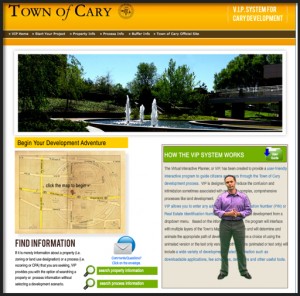
Our goal was to focus on the process itself, not specifically any rules or regulations. There is a reason for this, as well. There seems to be a shift at the state level, to limit government regulation. We have seen that by the NC Supreme Court ruling on the inability to implement APFs in Cabarrus County. This limitation of municipality authority will impact how we move forward.
Here are some of the highlights from our brainstorm session: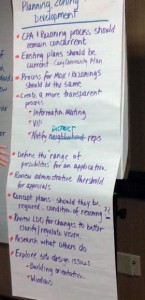
- Council felt that we should streamline processes, and make the Mixed Use process the same as the current Zoning Process. That means that all Public Hearings on these issues will come to Council first.
- We still believe that CPAs (Comprehensive Plan Amendments), meaning changes to the overall plan that is in place, should be in line with rezonings. That is, that if a developer or property owner wants to amend the plan AND rezone for a different use than was originally planned, those 2 requests should come together to council.
- Consensus that we need to re-look at the approval thresholds done administratively (by staff) moving forward.
- Discussion regarding sketch and concept plans, and whether they are enforceable if provided
- We reviewed the process used by other municipalities (what they called the BIG 14 including Raleigh, Charlotte, Winston-Salem, Asheville, Chapel Hill, Greensboro, and others), the length of time it takes and how they involve citizens and developers
- How can we get the right information to citizens so that they are aware of the process, and how changes will impact them. We discussed adding more public information sessions as part of the process.
- Discussion on how to ensure that we GET what we EXPECT from a rezoning, what we called “results on the ground”
- We also reviewed two case studies to understand the process and flow –
- Sears Farm PDD started in 2001 with multiple tweeks along the way, and some concerns raised by council members regarding the uses, the positioning of the commercial buildings
- Stone Creek Village – started in 2002, ended up close to expected results
An Aging Population
Our 2010 census data revealed that one of our fastest growing populations is our Senior community – 65 and older. That’s a surprise to no one considering the buildout of Carolina Preserve (an almost 1000 acre Del Web community), the new expansion of Glenaire and new approvals for new residences that have recently come to council.
Juliet Andes presented an update on the trends in this area – giving us detail on the difference between what we call the “Greatest Generation” and “Baby Boomers.” (Yes, I’m a Boomer – the last of the Boomers born in 1964 – no jokes, please.)
The discussion on this topic was focused on how we can best ensure we have the services we need for this demographic, and to make sure that we are an “age-friendly” community.
Highlights from this discussion were:
- Cary median age has changed: 33.7 in 2000, 36.7 in 2011
- Percentage of people over 65 has increased: 12% in 2000, to 22% in 2011 with 2000 Cary citizens turning 65 every year
- 78.2 million Boomers (1946-1964) in the US
- 40% of Boomers expect their adult children to move back in with them (say it ain’t so)
- 30% of Boomers expect their parent to live with them (Uh oh)
- By 2050 the number of people 65+ will be double
- Boomers don’t like to be called Seniors. (I guess that’s true, since I’m not…yet.)
Seniors/Boomers needs and wants :
- Walkable and bicycle friendly communities
- Needs for outdoor spaces, transportation, housing, health services
- To engage and participate civically, like to volunteer
- Want to “age in place” with new housing trends on the rise (Generational housing)
- Boomers made up more than 50% of the Cary Community Plan applications
- I suggested we look at having a Senior Council – similar to our Teen Council, that could look into ways to engage our senior community
Saturday
Saturday’s focus started with a fun topic – APFs, LDOs and TDFs (say that 10 times fast…)
That’s Adequate Transportation Public Facilities, Land Development Ordinance and Transportation Development Fees.
As you know, a recent NC Supreme Court ruling in Lanvale vs Cabarrus County has caused us to relook at our current Roads APF. That ordinance allowed us to ensure that when a development was built, the Town could ensure that we could address traffic, safety and road congestion during the development process by using the APF as the mechanism to do so.
Now, because of this recent NC Supreme Court ruling as well as the courts’ evolving reading of local government’s ability to adopt zoning and development laws, we need to relook at our processes. As a council, we have a fiduciary duty, as caretaker of your public dollars, and in doing so, we need to find a way to implement a process and approach that is in keeping with the Supreme Courts ruling, while still adhering to the way all of our citizen’s expect Cary to look and feel.
Having said all of that, we looked at a number of ways to move forward, while getting an update from staff on the process so far.
- Moving forward on repealing the “Roads Ordinance”
- Moving traffic studies to rezoning
- Reviewed the process with P&Z in a work session and subsequent meeting (they voted 9-0 recommending approval of the LDO amendments, but they are concerned with how long this “temporary” solution will be in place)
- Feedback from development community regarding the length of time and impact on current development in the pipeline, as well as on the threshold for sending subdivision/site plans to council being too low/restrictive
- We DO have authority for TDFs – and have the ability to increase those fees to help bridge the gap in loss of road improvements via the APF
- We will discuss the 9.32% increase in TDF fees at an upcoming Council meeting
- Staff will be taking all of our, P&Z, and the Development Community feedback and coming back with alternative solutions.
Business Development and the the “New Normal”
The final session (before the 2nd Spotlight series) was around Business Development or “the New Normal.” So what does that mean? Council members have heard from a number of businesses that today’s financial environment is very different than 4 years ago. That change is also apparent in Cary. We only have 10,000 acres left of developable land and we are beginning to reach our boundaries. Much of that 10,000 acres will be infill, redevelopment, and some of that is not readily developable land.
Some interesting highlights:
- Many are uncertain about the future, taking a “conservative approach to funding and investing”
- We are seeing more competition from our neighboring localities
- Multi-family rezonings and developments are on the rise
- Less demand for office space (14% vacancy rate today), more “work from home”
- Not likely that we will ever return to the hey day of pre-recession housing buildout, what we have lately, is probably what we will have moving forward
- Our last 5 year permitting, water, and sewer fees average is more likely what we will see in the future – which is significantly less than in 2007 (2007 total: ~$2.7M, 2012 total: $1.7M)
- Our growth last year was 1.9%, about 2500 people
- Our investment earnings have taken the biggest hit. In the “good ole days” a large part of our projects were funded by the investment earnings.
- In FY2008, our investment earnings were $19.6M, last year, $1.6M
- The loss of that revenue (about $18 million dollars) can mean a significant impact on our tax rate. Our town has done a great job adjusting to this new normal.
- Cary’s unemployment rate (currently 5.4%) continues to be much lower than other municipalities and groups (Wake County(7%), RTP(7.6%), NC(9%), US(7.4%))
- 76% of our property tax base is residential, 24% commercial
- Staff has done a great job managing the changes in our revenue stream, with one of the most efficient staffs in NC, if not the country. They have found ways to alter their processes, to reduce costs while working hard not to impact our quality of life. For instance, we have delayed some of the maintenance of our roads, lengthening the time between resurfacing.
Mock Development Review Process
We then had an opportunity to get a hands-on experience on what our Development Review Committee (DRC) is like.
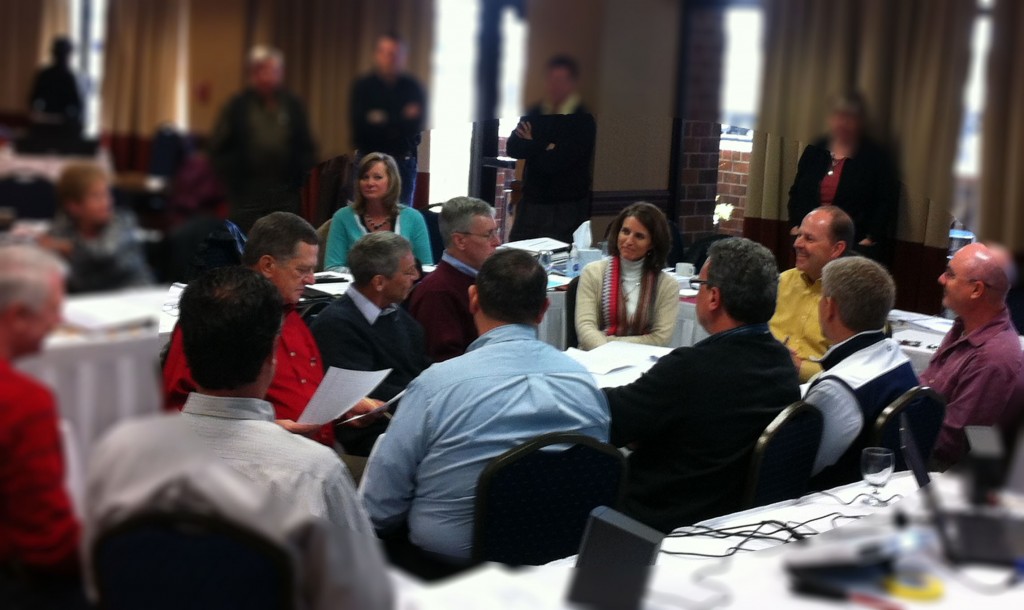 Mayor Weinbrecht and Council members Smith, Robinson, and Yerha played the role of developers (quite well, I should add) and presented an actual proposed convenience store and restaurant that has come to the DRC before. This activity gave us a real idea of some of the complexities involved in bringing a development to Cary, but also a good feeling of the transparency and outreach that our staff does to help businesses come to Cary. ( It was also interesting to have two developers in the room to watch, as well.)
Mayor Weinbrecht and Council members Smith, Robinson, and Yerha played the role of developers (quite well, I should add) and presented an actual proposed convenience store and restaurant that has come to the DRC before. This activity gave us a real idea of some of the complexities involved in bringing a development to Cary, but also a good feeling of the transparency and outreach that our staff does to help businesses come to Cary. ( It was also interesting to have two developers in the room to watch, as well.)
Yes, there are certainly things we can do to be more “business friendly” – and I think that was the point of the exercise. And we asked staff to look at those, and come back to council with some recommendations.
Project Phoenix
 Last, but in NO WAY LEAST, we heard and update from Police Chief Bazemore on the incredible success of Project Phoenix. This project is a true example of how Cary works so hard to keep it’s citizens safe and secure.
Last, but in NO WAY LEAST, we heard and update from Police Chief Bazemore on the incredible success of Project Phoenix. This project is a true example of how Cary works so hard to keep it’s citizens safe and secure.
Project Phoenix (Promoting Healthy Occupancy through Education Networking and Information eXchange) is a program that targets Cary Apartment Complexes, to reduce crime, engage citizens and youth, and support the quality of life for those residents and surrounding communities.
Highlights of this program:
- Program focuses on a partnership with property manager and the residents (Update leases for to include a Drug and Crime Free Housing section), property managers must attend a 1 day workshop, organize a social event each year, and update the property to be in compliance to “Crime Prevention through Environmental Design” principles. That can mean adding more lighting in the parking lot, cutting down trees or pruning bushes to open dark and obsure areas.)
- Originally hoped for 12 complexes/year to sign up. They now have 42 signed up, out of 57!
- Apartment complexes are finding that participation is a great benefit and potential renters WANT to be part of a complex in the program.
- Lots of engagement by other town organizations like Parks and Rec, SPRUCE, Fire Department, P&Z and others. Certainly a town-wide multi-department initiative.
- Local kids in these developments have an opportunity to go to programs in the complex, or, through Public/Private partnerships, to other programs such as White Tiger, USA Baseball, Rail Hawks, and the Triangle Aquatic Center. It’s phenomenal that these businesses are participating, and bringing these programs directly to this kids. o Some complexes were creating multiple police visits a day and now there are hardly any in a week.
- It’s a real success story. Crimes that were on the increase in and around these apartment complexes are now on the way down. They’ve gone from crimes on the rise, to a collective 6% decrease in crime. And, if you compare active communities from a year ago, in just a snapshot during the warmer months (apparently crime is higher when it’s warmer out), crime in those areas is down 16% for ALL crimes, and down 28% for some of the selected crimes. (Let’s call those the BAD ONES.)
Take a look at this video that really says it all.
So, I think that’s a great way to close a blog post, and the session.
I found this retreat to be a reflection of what my time has been on council so far. It’s been exhilarating, engaging, a learning experience, and an opportunity to tap into the collective knowledge, passion and commitment of some of the best public servants around.
For me, this retreat and the last continue to demonstrate that we DO live in one of the best places to live, work, play and raise a family. I hope you agree.
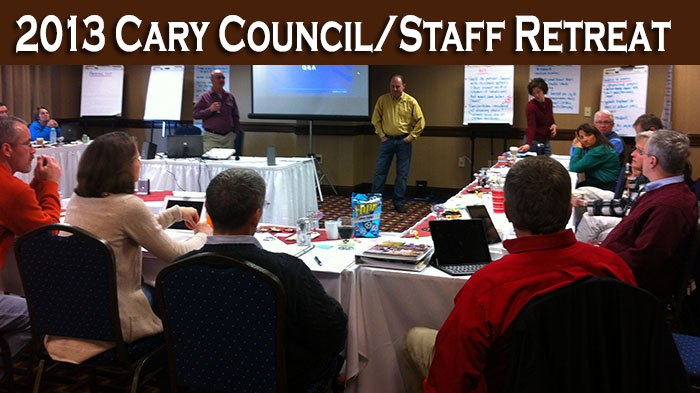
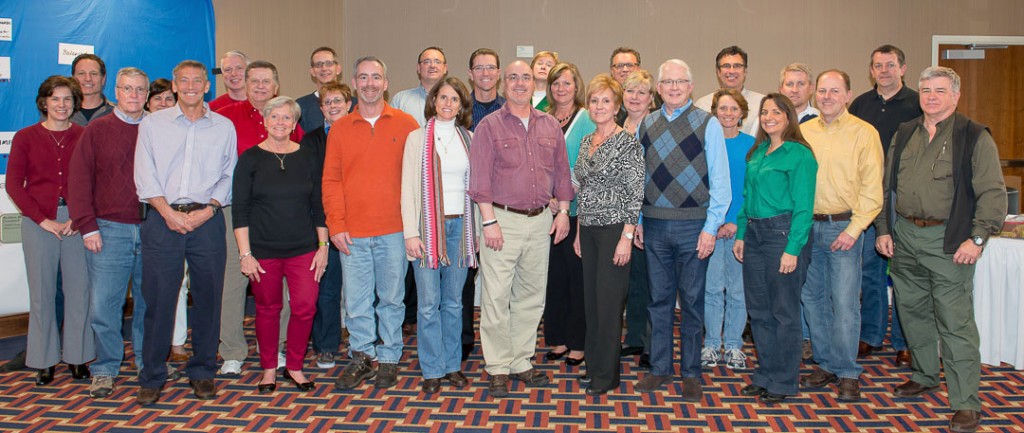

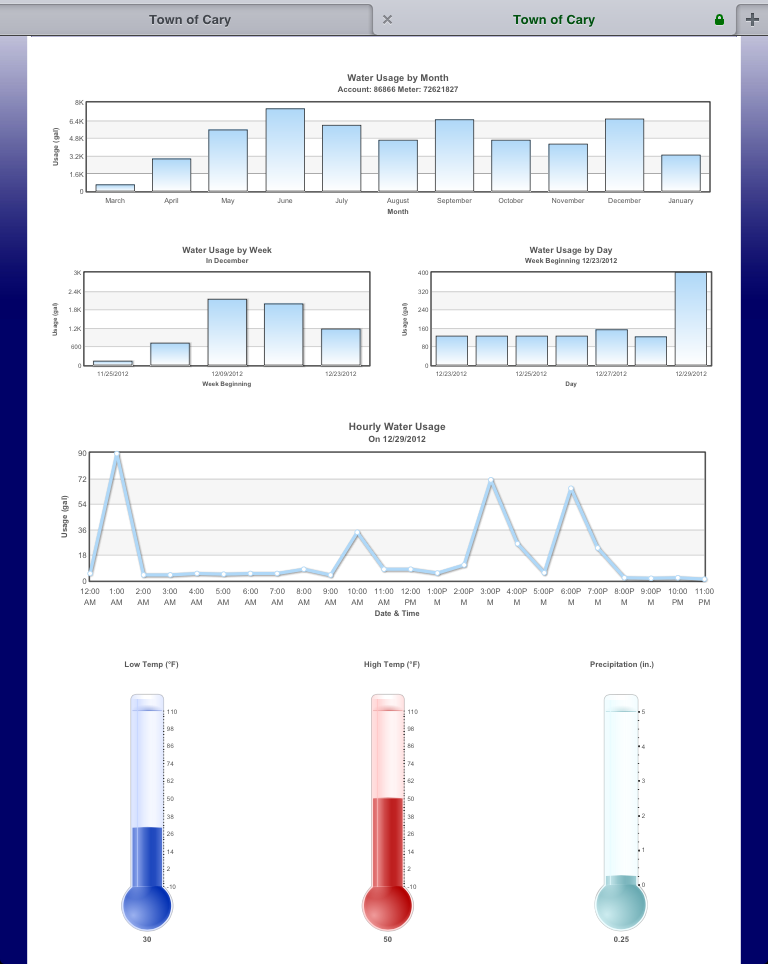

One Response to Planning for the Future